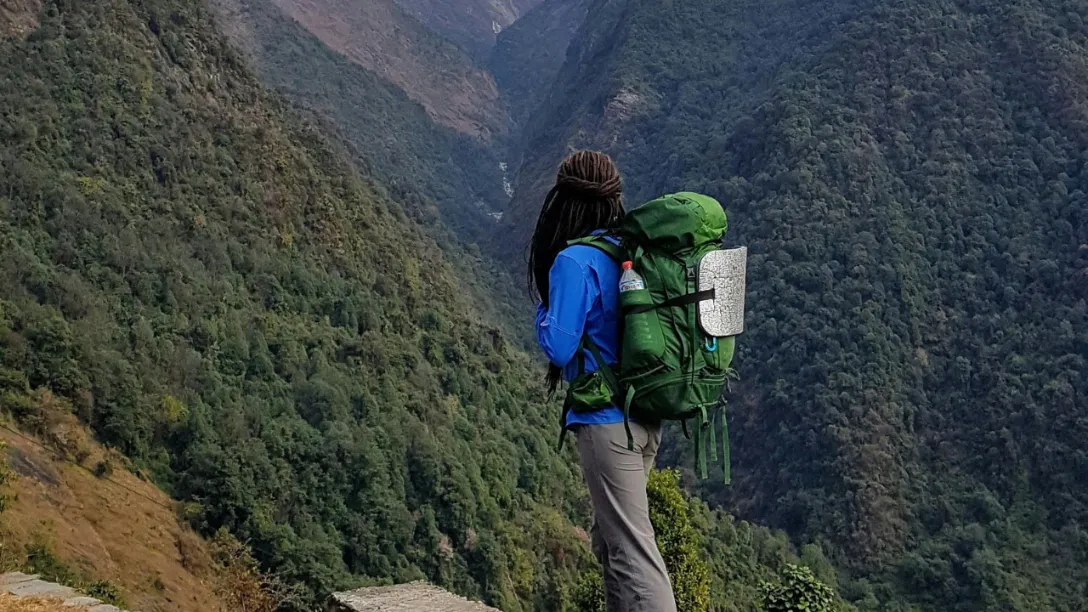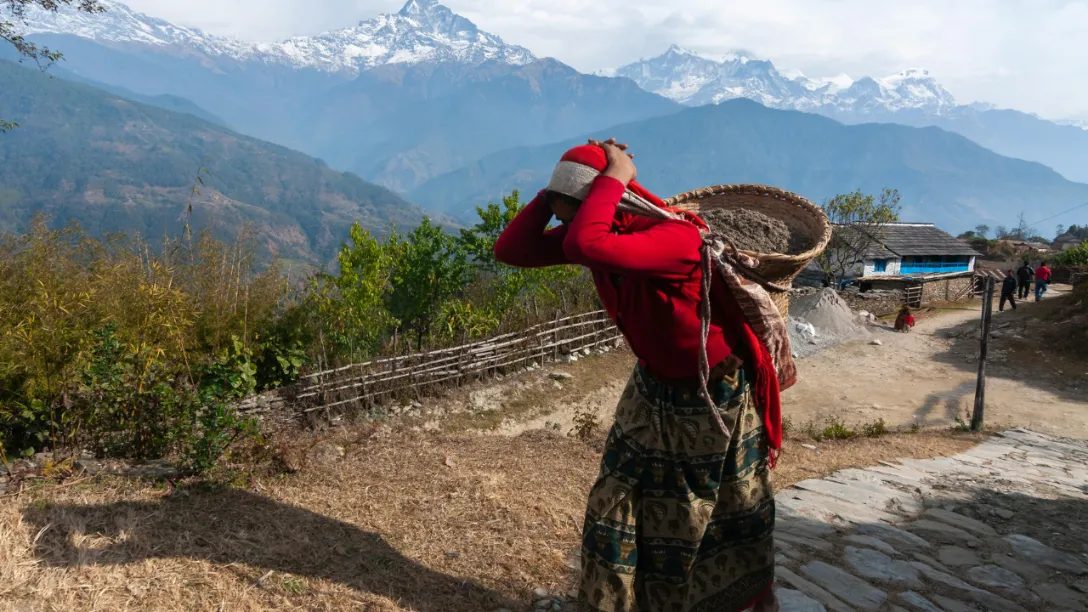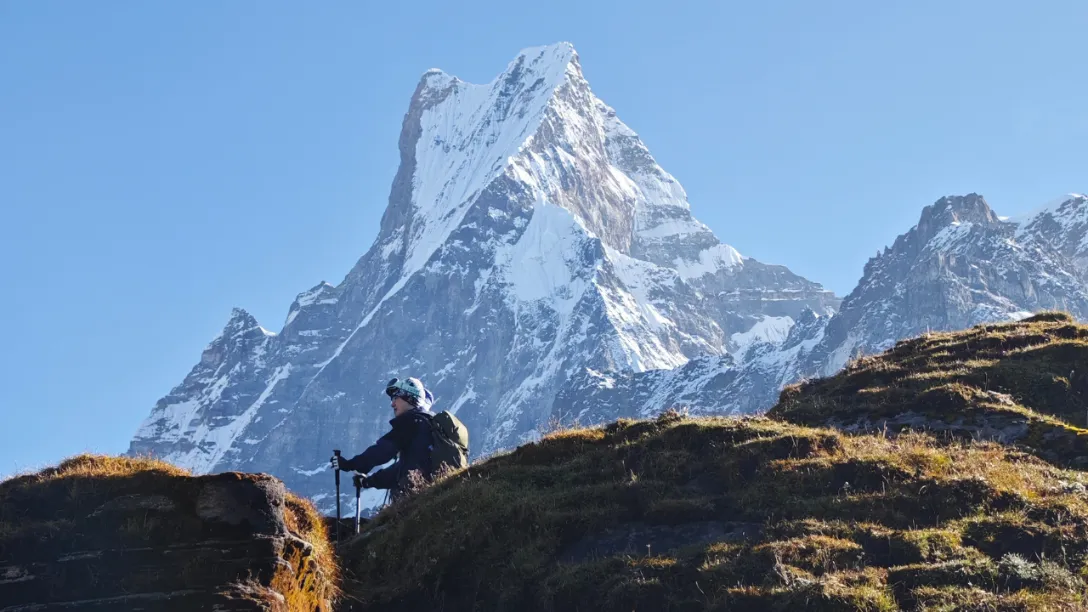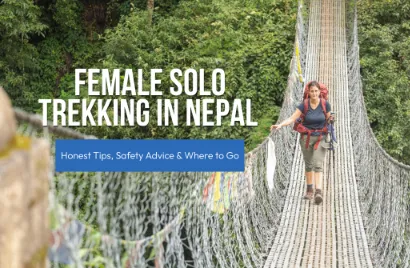Nepal vision | 13/10/2025
Going on a hiking expedition in Nepal? You are in a treat - you will have snow-tipped mountains, picturesque villages, and an almost retrogressive society. However, this is the point: Nepal is not only about the paths and landscapes. The citizens here are conservative, and their customs and traditions have been passed down through generations. Knowing them can help make your experience not only enjoyable, but also meaningful.
In the manner in which you welcome someone, the way you dress and eat, or even in taking photographs, little things demonstrate courtesy and enable you to associate with locals in a natural style. Disregard them, and you are likely to end up hurting someone or missing out on the warmth that this region can offer.
Then, whether you are taking tea in a country lodge, strolling through a village, or exploring a monastery, you will be in a better position to understand some little dos and don'ts that will make the good walk easier, safer, and more gratifying. Curious about what they are? It is time to examine the major local practices and customs that every trekker should be aware of before heading into the trails.
Why Does Cultural Awareness Matter When Trekking in Nepal's Mountains?
Nepal trekking is not just about conquering trails or capturing Instagram-worthy images; it is about entering a world where every village, monastery, and trail has a story to tell. In the mountainous areas, various communities exist, including Sherpas, Gurungs, Tamangs, and Tibetan settlers, each with distinct customs and lifestyles.
The fact that you understand these cultural differences makes being polite more than just a trivial action; it makes your trek a more meaningful experience. By being respectful of local norms, you will be able to bond with these people, win their trust, and even have an enjoyable experience that the majority of tourists do not have. A bit of knowledge can be a long way on your journey as you explore more deeply and gain more of that experience to keep you in Nepal.
What Makes Nepal’s Mountain Culture So Unique?
The mountains of Nepal are not just picturesque landscapes but an animated and woven cloth of traditions. Buddhist, Hindu, and Tibetan beliefs have a profound impact on everyday life, festivals, and even architecture. Spirituality is deeply embedded in daily life: prayers, rituals, and holy places are an integral part of life here.
Another hallmark is hospitality. Locals are friendly to tourists and are willing to offer them tea, breakfast, or a place to stay, and they are happy to share their culture with the visitors. Life is also closely connected to the community members, where people watch over one another, making the villages a comfortable and secure place to reside. This is one of the best parts of trekking in Nepal because one has the experience of this culture.

How Can You Show Respect in Everyday Interactions?
In the Nepalese mountain villages, respect is often conveyed through small gestures, which can go a long way. A handshake, palm-to-palm, accompanied by a slight bow, Namaste, is the most welcome and is generally well received, with the traditional greeting of 'Namaste'. During non-speak times, body language does count; do not point at anyone, do not touch their head (sacred), and keep a distance.
It is essential to be non-assertive and courteous. Always smile, be friendly, and appreciate the people and their way of life. When a traveler tries to learn their ways, locals take note of it, and it may lead to more genuine and richer experiences.
What Are the Cultural Do’s Every Trekker Should Follow?
The following are some of the dos that you should keep in mind to make your trek enjoyable and smooth:
- Greet with Namaste: It is a friendly gesture of respect.
- Wear humbly: Be able to cover your knees and shoulders, particularly in villages and monasteries.
- Your right hand: Receive food, gifts, or money using your right hand - it is polite and traditional.
- Ask permission: Do not take photographs without obtaining permission first.
- Support local businesses: shop in the local markets, dine at local teahouses, and respect their unique lifestyle.
These few practices will help you to blend in, be respectful, and have a better trekking experience.
What Behaviors Should You Avoid to Prevent Offending Locals?
As there are activities that may be performed, so are there practices that should be avoided:
- Not to touch the head of anybody is sacred.
- Do not point your feet at individuals, shrines, and religious objects.
- Do not enter temples or monasteries wearing shoes.
- Avoid showing affection in public, especially in the villages.
- Do not disrespect religious items - littering or damaging the environment is considered a disrespectful act.
With these don'ts in mind, you will always make a good impression, and this will ensure the harmony of the local community is maintained.
How Should You Behave When Visiting Monasteries and Sacred Sites?
Visiting a monastery or holy place in Nepal is like entering a different world, one that is peaceful, worshipful, and rich in centuries-old traditions. To show respect:
- Keep off your shoes and hats, and come in. It is a simple practice of celebrating the sacred space.
- Circle stupas, prayer wheels, and mani walls clockwise; that is the traditional manner of showing respect.
- Maintain low-key and polite conversations. Additionally, speaking loudly or laughing is considered disrespectful in religious areas. Following this, you can enjoy the serenity of these places without disturbing them.

What’s the Appropriate Way to Dress in the Villages?
Being considerate in your dress indicates respect and will make you look well. Here’s what to keep in mind:
- Shoulder and leg covers - this is particularly when one is visiting a village or religious place.
- Avoid wearing tight or revealing clothing. Even during the hot seasons, the simple clothing is valued.
- Strike a balance between modesty and culture. Lightweight fabrics are ideal for trekking and exploring the local culture simultaneously.
- Local brains in your wardrobe will go a long way in making locals feel respected and welcomed.
How Should You Handle Dining and Food Etiquette?
During the Nepal trekking experience, one of the best experiences is having meals with locals, but there are several culture-related rules to observe. Wait until the older people have finished eating before you eat, and never pass or receive food with your left hand, as this is considered rude.
Food should not be wasted, as leaving uneaten food may be regarded as disrespectful and demonstrates a lack of genuine enjoyment of even the most basic local food, such as tea or dal bhat, in a mountain lodge. These few actions ensure that the dining experiences are pleasant and culturally sensitive.
What Are the Rules for Photography in Remote Villages?
Taking photos can help you capture memories, but it’s essential to be thoughtful and considerate in the process. Always ask for permission before photographing people or sacred sites, and be mindful of your presence during rituals; never take photos without invitation. Building rapport first goes a long way; locals are more likely to allow photos when you show genuine interest and respect. By being considerate, you can take beautiful pictures while maintaining the trust and goodwill of the communities you visit.

How Can You Support Local Communities Respectfully?
Supporting local communities is a key part of responsible trekking. Hiring local guides and porters not only ensures a smoother trek but also directly benefits the people who know the trails best. Buying handmade crafts from local artisans helps preserve traditional skills, and tipping fairly while engaging kindly shows appreciation for their service. Practicing sustainable travel in Nepal, as respecting trails, water sources, and the environment, ensures that your journey has a lasting positive impact that lasts long after you’ve left.
To wrap up, exploring Nepal’s mountain regions is not just about breathtaking landscapes; it’s about connecting with the people, their traditions, and the way of life that has thrived for centuries. By following simple do’s and don’ts, dressing thoughtfully, respecting sacred sites, and supporting local communities, your trek becomes more than a journey; it becomes a meaningful experience that leaves a positive impact. Small gestures of respect go a long way in building trust, creating memorable interactions, and allowing you to immerse yourself in the magic of Nepal truly.
Ready to experience the Himalayas the right way? Let Nepal Vision Treks guide you through authentic adventures while respecting the local culture and traditions. Nepal: Book your trek today and discover the mountains, the people, and the traditions in a way that stays with you forever.
FAQs









